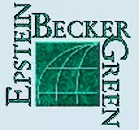The Occupational Safety and Health Administration ("OSHA") is currently working on several issues that will effect employers in almost every industry. OSHA Administrator Charles N. Jeffress has identified several of the administration's priority rulemaking and legislative efforts for 1999, including a revised recordkeeping rule, an ergonomics standard, and enhanced whistleblower protection laws.
Revised Recordkeeping Rule
OSHA is currently working on a final rule which will amend the existing regulations governing an employer's obligation to record its employees' work-related injuries and illnesses. This rule is targeted to be published in June of this year and to take effect in January 2000. The revised recordkeeping rule is expected to clarify the definition of work-relatedness, making it easier for an employer to determine whether or not an injury or illness must be recorded. The new rule is also expected to better explain what constitutes light duty, and to contain an improved and simplified form for recording injuries and illnesses. OSHA's proposal would also increase the number of employees an employer must have to be covered by the rule, from 11 or more employees to 20 or more. This change would not apply to the construction industry.
Ergonomics Rule
OSHA is also in the process of completing a proposed ergonomics standard. Despite congressional resistance and a prohibition from publishing a final rule during the fiscal year 1998, a draft of the ergonomics standard has recently emerged within OSHA. The proposal would require covered employers to identify hazards, ensure employee participation, analyze job hazards, and train employees to recognize and avoid hazards that cause musculoskeletal disorders. Draft Ergonomics Rule Would Require Ergonomics Coverage if Disorder Reported, Daily Lab. Rep. (BNA) No. 18, at AA-1 (Jan. 28, 1999).
According to Jeffress, the standard's coverage would be limited to those operations, jobs and tasks that have reported high rates of work-related musculoskeletal injuries, such as production operations in the manufacturing industry and manual handling jobs in general industry, and to those employers whose employees have suffered such injuries. Jeffress has also indicated that the solutions for musculoskeletal hazards will focus on those that are well demonstrated.
Enhanced Whistleblower Protections
Jeffress stated in a BNA interview that one of OSHA's highest priorities will be for legislation to enhance protection of employees who are fired or discriminated against as a result of reporting workplace safety violations. Improved Whistleblower Protections Top OSHA Legislative Priority in 1999, U.S.L.W. (BNA) Vol. 67, No. 22, at 2349 (Dec. 15, 1998). Currently, Section 11(c) of the Occupational Safety and Health Act of 1970 (OSHA) 29 U.S.C. § 651 prohibits an employer from discharging or otherwise discriminating against an employee because that employee has filed a complaint or has testified or is about to testify in any proceeding relating to the OSH Act. Section 11(c)(2) provides that an employee must file a complaint with the Secretary of Labor within 30 days of the discrimination or discharge, and that the Secretary may, after appropriate investigation, institute a court action against the employer. The statute also provides that the court may order all appropriate relief including rehiring or reinstatement with back pay.
In a February 11, BNA interview, Jeffress noted that the OSHA whistleblower protections are not as protective as those afforded employees under other statutes and stated that he has been working with Democratic lawmakers on proposed legislation. Clinton Administration Developing Bill to Protect Workplace Safety Whistleblowers, Daily Lab. Rep. (BNA) No. 31, at A-9 (Feb. 17, 1999). The new legislation, if passed, would extend the time for filing to 120 days, give employees a private right of action, allow the case to proceed before an administrative law judge instead of a district court, and expand the remedies available to employees. If we may be of assistance in answering questions, please feel free to contact us by telephone or e-mail as set forth below.
The information provided herein is for general guidance on matters of interest only. While every effort has been made to ensure the information provided herein is accurate and timely, no decision should be made or action taken on the basis of information without first consulting an Epstein Becker & Green professional.
Elliot Mandel Epstein Becker & Green 250 Park Avenue New York 10177-0077 USA Tel: 212 351 4500 Fax: 212 661 0989 E mail: Click Contact Link Please visit our website at Click Contact Link

